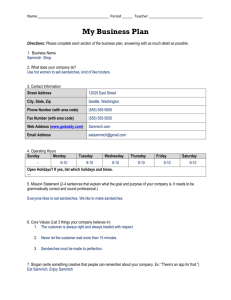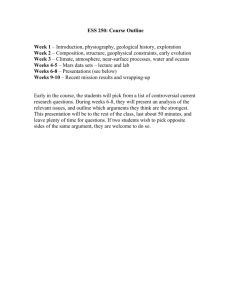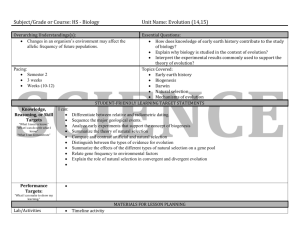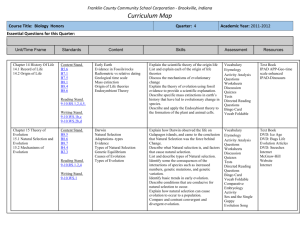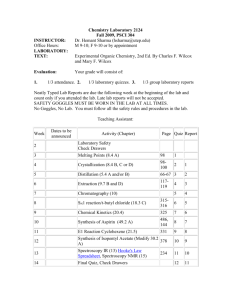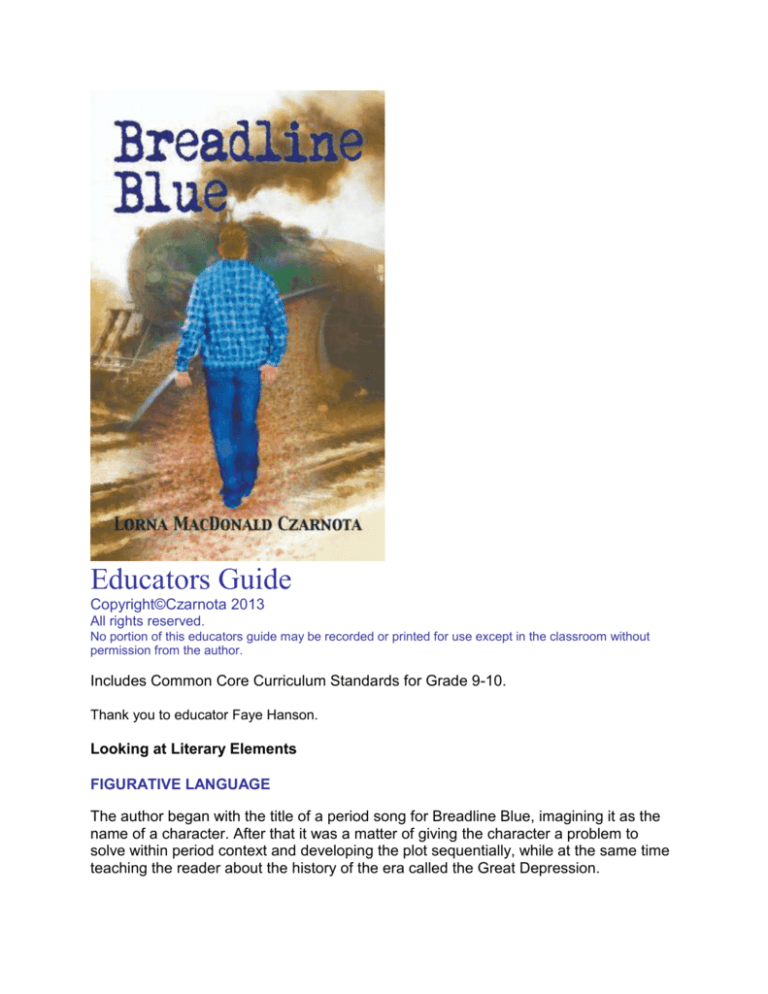
Educators Guide
Copyright©Czarnota 2013
All rights reserved.
No portion of this educators guide may be recorded or printed for use except in the classroom without
permission from the author.
Includes Common Core Curriculum Standards for Grade 9-10.
Thank you to educator Faye Hanson.
Looking at Literary Elements
FIGURATIVE LANGUAGE
The author began with the title of a period song for Breadline Blue, imagining it as the
name of a character. After that it was a matter of giving the character a problem to
solve within period context and developing the plot sequentially, while at the same time
teaching the reader about the history of the era called the Great Depression.
Activity: Choose a song title from a historical period, create a character and problem to
be solved within that period context. The song title can be anything in the story from a
place to the name of a character. Plot a sequential timeline of events that will move
your character toward solving the problem.
Correlates to Common Core Standard Writing: Text Types and Purposes 9-10.3
VOCABULARY AND USE OF LANGUAGE
Students should develop a list of unfamiliar words and terminology. Take note of how
character dialect is used in the story and how it is written. How do these words portray
time and place? Take a sample of the main character, Blue, from the story and correct
it using conventions of standard English. How does it change the effect on the story and
the character?
Correlates to Common Core Standard Reading Literature: Craft and Structure 9-10.4 and
Language Conventions of Standard English 9-10.1
Vocabulary List:
Breadline
Vigilante
Vagrant
Migrant
Ne’er-do-wells
Appalachians
Pneumonia
Reckon
Downtrodden
Bib-overalls
Inclination
Inscription
Swell (noun)
Uppity
Satchel
Bulls
Bum
Tramp
Hobo
Bo
Big Rock Candy
Mountain
Britches
Chicory
Hooverville
Hobo Jungle
Shantytown
Foreclosed
Hedonistic
Well-to-do
Skedaddle
Behoove
Queer
“Angelina”
“Uncle”
Bonafide
Gazebo
Five & Dime
Odd-job
Sassafras
“Kike”
Ku Klux Klan (KKK)
Tree-sitter
Eleanor Roosevelt
Woody Guthrie
Bing Crosby
Susquehanna River
The “Pennsy” Line
Foodstuff
Midnight Special
Brakeman
Boilerman
Gondola
Civilian
Conservation Corp
(CCC)
Bindle
Hemophiliac
“Bones”
“Pansy”
Seven Come
Eleven
Acey Deucey
Look-see
Traversed
Great Depression
Colic Remedy
Stickball
Cat’s cradle
Tuckered
Delaware River
Potomac River
U.S.S. Cassin
Philadelphia Naval
Yard
U.S.S. Philadelphia
Potomac Yard (Pot
Yard)
Greenwich Freight
Yard
Paul Bunyan
Saginaw Joe
Veni Vidi Vici
“Bale of Straw”
“Beanery”
“Beanery Queen”
“Adam and Eve on
a raft”
“Pile-driver”
Amelia Earhart
Hindenberg
Dirigible
Smithsonian
Marguerite LeHand
Fidgety
Motor coach
FORESHADOWING
For this story, the author chose to begin the book with the main character coming
home, then telling his story. What clues are given in the opening paragraph that tell the
reader something about the story before the plot unfolds? Name other places in the
book where the author used foreshadowing. How does foreshadowing affect the
readers’ thought process as they read? Discuss the various possibilities for the opening
scene. With a writing partner, create an alternative action based on a section of this
story. Use foreshadowing to make a potential reader “turn the page.” Give an oral pitch
for your new story section as if you are giving a movie pitch to a group of producers.
Correlates to Common Core Standard: Speaking and Listening: Comprehension and
Collaboration Literacy 9-10.1
CHARACTER ANALYSIS
Characters are driven by problems in most stories and those problems are sometimes
caused by environment, whether it is social, physical or emotional. Breadline Blue is set
during the Great Depression. How does Blue’s environment affect him? And how does
environment play a role in his later discoveries in the book? If you were to rewrite Blue’s
story, what other elements could you use to motivate and inspire Blue? Choose an
incidental character from the story (one who does not play a large role in the plot) and
create a back story about that character based on environmental factors and events
during he Great Depression.
Correlates to Common Core Standard Reading Literature: Key Ideas and Details 9-10.2
THEMATIC CONNECTIONS
Discuss the themes present in the story. Make a list of quotes from the book that
support these themes. Which theme is the main theme of the book? How does it
develop through events and the character’s actions? Select an incidental theme (one
that is not the main theme) and create a new plot line for that theme. (A plot line is a
summary of what the story could be. It is not an entire story.) Deliver an oral argument
from the perspective of one of the story characters in an effort to change Blue’s
direction in the story.
Correlates to Common Core Standard Reading Literature: Key Ideas and Details
9-10.1, 9-10.2; Speaking and Listening 9-10.3
ESTABLISHING SETTING
The author did research for this book. Cite particular areas of the book that would
require specific research and determine possible sources for this information. The
author typically uses up to four sources for each area of research when possible.
Correlates to Common Core Standard ELA-Literacy Key Ideas and Details 9-10.1; Integration of
Knowledge and Ideas 9-10.9
PRE-READING ACTIVITY
Help students understand the time and place of this story by reviewing the dates of the
Great Depression, events leading up to it, and events immediately following it (cause
and effect). Discuss some of the issues Americans faced during this time, including
foreclosure, homelessness, hunger, joblessness. Discuss some of the social programs
developed during this time, including the WPA and CCC, Social Security, and
breadlines. Discuss racial prejudice, the Nazi movement and the KKK.
Look for places in the story where the author uses current events to establish the era
and consider how characters react to those events. What is the author’s device or
means of showing this? How did the author’s research and knowledge of history hep
build the story?
Correlates to Common Core Standard Reading: Informational Text Key Ideas and Details 910.3; Writing: Research to Build and Present Knowledge .9-10.7, 9-10.9
AFTER READING Group Discussion
• Discuss dangers faced by young people who left home during the Great Depression
and their reasons for leaving.
• What dangers do young people face today, if they choose to leave home? How are
these dangers similar to or different than those faced by youth during the 1930s?
• How do you think people survive hardships such as those faced by the characters in
the story?
• What events in the story change Blue’s purpose for visiting Washington?
• What promises does Blue make? Do you think he will keep them and how?
• Blue refers often to his family and their values. Do you have a voice from your family
in your ears and what you they say? Share some family values and stories.
Correlates to Common Core Standard Speaking and Listening Comprehension and
Collaboration 9-10.1, 9-10.2 , 9-10.3; and Reading: Informational Text Key Ideas and Details 910.1, 9-10.3
CURRICULUM CONNECTIONS
The author had to determine where Blue would travel and when, and how that would
correlate with current events of the time, as well as the effect it might have on the entire
journey and Blue’s reactions to various situations. Create a timeline and discuss the
tools the author used to exhibit the events on the timeline.
Imagine you are a screenwriter (someone translating a book into a form suitable for the
movies). How would your story compare with Breadline Blue? Look at other stories in
book and movie form to see how they compare. Why did the screenwriter make the
choices they did for the story they told, versus the author of the book?
An author, whether historical fiction or science fiction for example, must have
knowledge of their topic. Choose a subject, ask yourself a question about that writing
subject, then conduct a research project to answer the question. Present your findings
either as an essay, short subject story, oral report, or in-persona newscast. Use multiple
sources.
Correlates to Common Core Standard Reading: Informational Text Key Ideas and Details 910.1, 9-10.3; Integration of Knowledge and Ideas .9-10.7 , 9-10.9 ; Writing: Research to Build
and Present Knowledge .9-10.7 , 9-10.8, 9-10.9; Text Types and Purposes 9-10.3 ; Production
and Distribution of Writing 9-10.4 , 9-10.5, 9-10.6; Speaking and Listening Presentation of
Knowledge and Ideas 9-10.4, 9-10.6;
History/Social Studies Key Ideas and Details 9-10.1, 9-10.2; Craft and Structure 9-10.4
ABOUT THE BOOK
Sixteen-year-old William Saxton, called Blue by his friends, listens to the buzzsaw of his
sickly father’s lungs and worries about his hardworking mother, night after sleepless
night. Blue writes a letter to Eleanor Roosevelt in Washington, D.C., asking for help, but
it goes unanswered. He decides to take matters into his own hands. With no more than
food from the family icebox and a fishing pole, Blue runs away intending to hop the rails
to D.C. where he plans to confront the First Lady. Blue knows little of the outside world
beyond stories from the local barbershop. He is not prepared for the extent of the
journey ahead, where he meets people who will help him, and others who have only
their own interests in mind. Faced with hunger and the elements, but equipped with
self-determination, Blue succeeds in reaching his destination. But the journey of has
changed his purpose, and Blue will never be the same.
ABOUT THE AUTHOR
As a storyteller, Lorna MacDonald Czarnota has delighted audiences in schools,
libraries, festivals and conferences throughout the United States, Canada, and Ireland
with traditional and original stories since 1985. Lorna specializes in original tales,
adaptation of classic fairy tales often with music, Celtic, historical and healing story. Her
historical presentations include Colonial America, Medieval, American Civil war, and the
Dust Bowl. Lorna sang Depression era songs with the Blue Eagle String Band.
She is the author of Wicked Niagara: the Sinister Side of the Niagara Frontier;
Legends, Lore and Secrets of Western New York; Medieval Tales That Kids Can Read
and Tell; “One Lace Glove”; August House Book of Scary Stories; “The Bleeding Heart”;
The Healing Heart Community.
Lorna is a member of the Society for Children’s Book Writers and Illustrators, and The
National Storytelling Network.
Lorna is a recipient of the Oracle Award from the National Storytelling Network, the
Hopevale Incorporated Volunteer of the Year Award, Storytelling World Award, and was
nominated as a Univera, United Way Community Hero.
SELECT BIBLIOGRAPHY
Children of the Great Depression. Freedman, Russell (2005). Clarion Books; New York
The Great Depression in America: A Cultural Encyclopedia, Volume 2. Young, Nancy K. &
William H. http://www.barnesandnoble.com/sample/read/9780313335204
Riding the Rails: Teenagers on the Move During the Great Depression. Uys, Errol L.
(2003). Routledge, New York.
Internet:
Riding the Rails ▪ http://www.livinghistoryfarm.org/farminginthe30s/water_07.html
▪ http://www.erroluys.com/frontpage.htm
Lifestyle
▪ http://www.allabouthistory.org/life-during-the-great-depression.htm
▪http://www.erroluys.com/HowAmericansHelpedEachOtherDuringtheGreatDepression.htm
▪ http://mindwrecker.blogspot.com/2008/01/1930s-restaurant-menu-berns-in.html
▪ http://libcom.org/history/1930-1939-unemployed-workers-movement
Washington, D.C. ▪ http://www.youtube.com/watch?v=rJzeVRKf3hE
Hoovervilles
▪ http://depts.washington.edu/depress/hooverville.shtml
▪ https://www.google.com/search?q=hoovervilles+philadelphia&client=firefoxa&hs=h5Q&rls=org.mozilla:enUS:official&tbm=isch&tbo=u&source=univ&sa=X&ei=Xpl6UeKMKu3O0QG98oFQ&ved=0CEsQ
sAQ&biw=1024&bih=657
▪ http://explorepahistory.com/displayimage.php?imgId=1-2-10FD
▪ http://www.brynmawr.edu/cities/archx/05-600/proj/p2/mcs/index.htm
Hobos ▪ http://hoboshoestring.wordpress.com/
▪ http://www.catskillarchive.com/rrextra/glossry1.Html
Trains ▪ http://www.west2k.com/pastations/philadelphia.shtml
▪ http://www.trainweb.org/phillynrhs/prr.html
▪ http://explorepahistory.com/story.php?storyId=1-9-10&chapter=4
▪ http://www.rrmuseumpa.org/index.shtml
Philadelphia ▪ http://en.wikipedia.org/wiki/North_Philadelphia
Eleanor Roosevelt
▪ http://www.pbs.org/wgbh/americanexperience/features/biography/eleanor-howe/
▪ http://www.gwu.edu/~erpapers/myday/
Timelines ▪ http://www.fdrlibrary.marist.edu/daybyday/timeline/#1937-07-07
White House ▪ http://www.whha.org/whha_about/about.html
▪ http://archive.org/details/whitehousediary006368mbp



